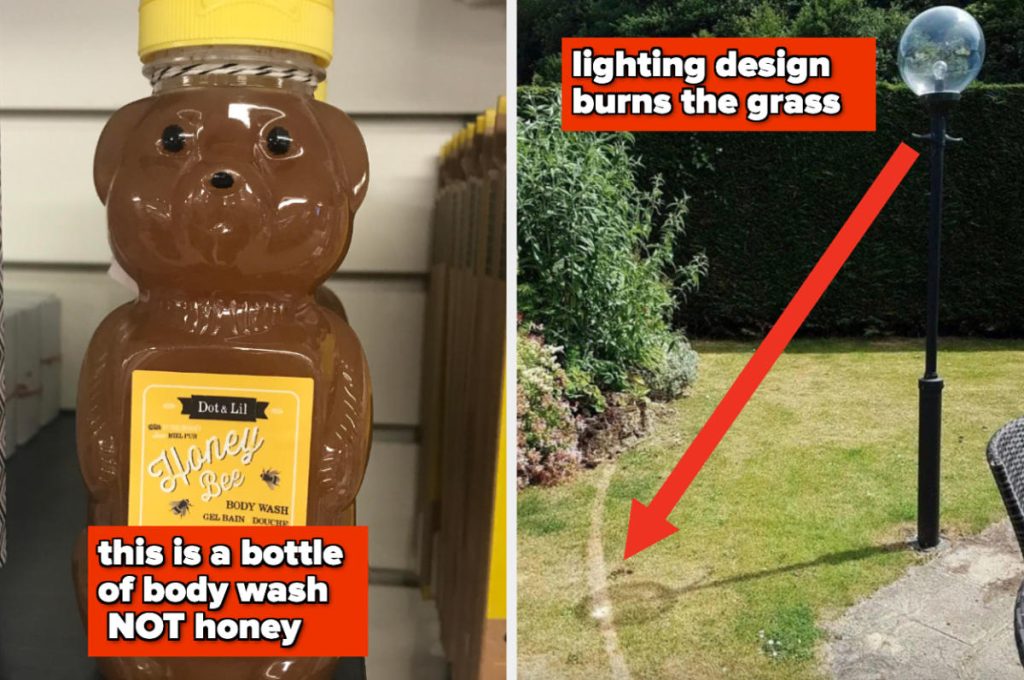This content highlights various examples of poorly designed or potentially dangerous objects and situations. The examples include a multi-tool where the knife does not lock in properly, a hotel window that opens too far, a boiler shut-off button placed near a light switch, body wash packaging that resembles honey, a confusing warning sign, and a cleaning product with child-friendly packaging but not safe ingredients.
Other examples include a lighting fixture that burned grass, a small button that poses a choking hazard for young children, a bike lane that suddenly ends, a trippy tile design that could cause imbalance, intersecting staircases, parking blocks that could cause accidents, similar bottles for different products, and mug handles that are difficult to grip.
Additionally, there are examples of stairs at a dangerous angle with gaps, a bathtub that poses a slip and fall hazard, a neighborhood sidewalk with slippery tiles, a slide placed in a risky location near a pole, a scorching stainless steel bench on the beach, and a car with brake lights positioned too low for visibility.
Overall, these examples showcase the importance of proper design and safety considerations in various products and situations to prevent accidents and potential harm to individuals. Each example highlights a potential hazard that could have been avoided with more careful design and placement considerations.


